
views
What is the value of a 1941 Wheat Penny?

A typical 1941 penny is worth $0.05-$29, but some are valued up to $35,000. Three different mints (San Francisco, Denver, and Philadelphia) produced over 1 billion of these coins, and Americans both spent them freely and held onto rolls of them for decades. This means most of them aren't very rare or valuable, even if they were uncirculated (i.e., collected and never spent). However, several factors can drive the value above $0.05-$29 into the $100 or $1000 range and even higher. A rare and valuable red 1941 penny, if found in mint condition, can be worth up to $35,000! Find the value of your 1941 wheat penny by searching for it on the NGC Price Guide or the PCGS Price Guide. Both resources show how much money other pennies from that year were sold at auction based on their overall condition, color, and mint mark. 1941 S Penny Value: $0.05-$20,000 1941 D Penny Value: $0.05-$13,000 1941 Wheat Penny No Mint Mark Value (Philadelphia): $0.05-$20,000
Factors Impacting the Value of a 1941 Penny

Overall condition Coin grading companies like NGC and PCGS assess a coin's value based on its overall condition. A 1941 wheat penny can receive a grade from 1-70, with 1 being extremely poor and 70 being perfect and uncirculated. The sharper and visible the penny's features are, the more it can sell for at auction. Another factor to consider, though, is rarity — uncirculated, near-perfect 1941 wheat pennies are fairly common. A coin collector might want to look at other factors, like the mint mark or strike quality, before they're willing to pay more than $30 for it (which is approximately what a brown MS-67 1941-D wheat penny is worth). One thing that greatly lowers a 1941 penny's condition (and its value) is PVC damage. Coins with this type of damage are usually stored in sleeves or a case made out of a type of plastic called polyvinyl chloride (PVC). When PVC comes into contact with copper, it can produce green, gray, or milk-colored spots and streaks.

Circulation Circulated coins are the ones that people spend and exchange as currency in the public market. Uncirculated coins are those that people collect and never spend. 1941 wheat pennies that have never entered circulation are usually in near-perfect condition, so their value is higher.

Mint mark A mint mark is a letter on the obverse side of a coin that stands for the first letter of the mint where the coin was made. Wheat pennies from 1941 were minted in Philadelphia (P), Denver (D), and San Francisco (S). Pennies with a "D" mint mark might be worth more because they have a superior strike quality, meaning the dies used to stamp the coins into strips of metal (called planchets) were in excellent condition. 1941 San Francisco pennies with a large "S" mint mark are also worth more because the large marks came from a brand-new punch. If you see a small "S" on the penny, it may have been stamped with an old punch from 1917, which was in poor condition by 1941. 1941 wheat pennies minted in Philadelphia don't have a mint mark. These coins are perhaps the least rare, but mainly because Philadelphia produced more of them than the other two mints.

Color When assessing an old copper penny's value, one of the most important qualities to a numismatic expert is the color. A professional coin grading company like NGC uses 3 primary color classifications (called strike characters) for pennies: brown (BN), red brown (RB), and red (RD). Brown pennies retain less than 15% of their original "red" or coppery color, whereas red brown pennies have at least 15%. These aren't worth that much, especially when evaluating a common coin like the wheat penny from 1941. Red pennies are the most valuable and sought-after (when combined with other factors like strike quality) as they have a minimum of 85% of their red luster left. Even more valuable are fully red pennies, which are easy to find among 1941 wheat pennies with a "D" mint mark.

Strike quality To make a penny (or any other coin), a mint uses dies to stamp the coin images onto a strip of metal called a planchet. If the die is old or worn out, the penny's strike quality will be low. This means that certain features on the coin might be flat and harder to read or feel with your finger. Many 1941 wheat pennies were made with dies in poor condition, and you'll see flat areas in the "O" in "ONE" and the letters that spell "AMERICA." Pennies that were struck with fresh dies have raised, easy-to-read features and a slightly higher value.

Strike errors It may sound a bit bizarre, but certain types of errors made during striking can actually increase a 1941 wheat penny's value. For example, a double die or off-center penny may be worth more than it would if it looked perfect and pristine. Read more about 1941 wheat penny errors (including which ones will make your coin worth more) below.
1941 Wheat Penny Errors

Double dies If your 1941 penny is double died, it may hold more value than a normal penny. There are 3 known varieties of double die pennies from 1941, designated as FS-101 (which is the most common), FS-102 (the rarest), and FS-103. "FS" stands for "first strike" and tells collectors that the mint struck the coin within the first 30 days of production. The number after it indicates the type of double die error. All 3 varieties have double dies on the obverse (front) side. FS-101: Obvious doubling in "IN GOD WE TRUST" and "LIBERTY." FS-102: Obvious doubling on the word "LIBERTY" and the 4 in 1941. FS-103: Subtler doubling on the 19 in the date, the "TY" in "LIBERTY," and below Lincoln's ear. A die becomes doubled when the hub used to make the die is misaligned. The misalignment makes a slight double image on the die, which is then transferred to the coin during striking. Mints usually replace doubled dies as soon as they find them, but they may make a few hundred or thousand coins before they discover the error. That's good news for coin collectors because double die coins are worth a lot more money than coins struck with normal dies! Keep in mind that the double die "error" is different from a double strike. A double strike occurs when the die strikes the coin twice. A double struck coin has flatter features, whereas a double die coin's features appear more raised than usual. This type of penny also tends to be worth more than a normal, single strike.

Off-center features Some 1941 pennies have features that look off-center. These types of error coins can be more or less valuable depending on how off-center the strike is. Coin collectors still want to see the entire coin design, so if the die misses the mark so much that some of the features are completely missing, the coin's value decreases. On the other hand, they still want to be able to see the error. The sweet spot is around 40-60% off-center. Then the coin's value increases. An off-center error happens when a planchet isn't properly seated, so that when the die strikes it, the design is slightly wonky.

Die cracks If a 1941 wheat penny looks like it has a raised line across the surface, it probably has a die crack error. This happens when the die used to strike the coin is cracked. During striking, the metal from the planchet seeps into the gap and creates a raised line on the coin's surface. Some coin collectors like coins with die cracks, so this error could raise the value of your 1941 penny in the right market.

Lamination A common error called lamination happens when a foreign substance — like dirt, grease, gas, or oil — gets into the planchet when it's being prepared. After the coin is struck, the part of the coin where the metal was contaminated flakes away, sometimes leaving unsightly holes or gaps behind. This is another example of an error that certain numismatists enjoy collecting, so selling it is simply a matter of finding an interested buyer.

Die break or cud One odd coin error (and a rare find among 1941 wheat pennies) is the die break, also known as a cud. You'll recognize it when you see it: the penny will have a raised glob of metal on its surface with no features on it. This error occurs when a die is missing a piece next to the rim. When struck, the metal from the planchet pours into the hole left by the break, creating a glob. A 1941 penny with this error is rare and can be highly valuable, depending on where the die break is located (and if a coin collector is interested in buying it).
Most Valuable 1941 Wheat Pennies

The most valuable pennies from 1941 are red, mint, and may have errors. Some errors, like the double die, make old coins rise in value. This is the case with 1941 wheat pennies, as some of the highest valued variations also have double die errors on their obverse (front) sides. Another key factor is its overall condition. It should also be in mint state, meaning it has no or very few visible imperfections. With that in mind, it's no surprise that the coins below go for a pretty penny (pun intended!) to the right coin collectors: 1941 MS-67 RD double die obverse: $35,000 1941 MS-68 RD: $20,000 1941-S MS-68 RD: $20,000 1941-D MS-68 RD: $13,000 1941 MS-66 RD double die obverse: $3600-6000 1941 MS-65 RD double die obverse: $1500-$2150 1941-D MS-67 RD: $185-$1050 1941-S MS 67 RD: $250-$950 1941 MS-65 RB double die obverse: $950 1941 MS-66 BN double die obverse: $650
1941 Wheat Penny Features
Obverse side (front) The front side of the penny — called the "obverse" — features a profile of President Abraham Lincoln facing right with the words "IN GOD WE TRUST" arching above his head. To the left of his profile is the word "LIBERTY" and to the right is the year the penny was minted (1941). On coins minted in Denver or San Francisco, the penny will also include a mint mark (a "D" or an "S") under the year.
Reverse side (back) The back, or "reverse" side of the coin features the words "ONE CENT" and "UNITED STATES OF AMERICA" stamped in the center. They're flanked on either side by a stalk of wheat (which is why this coin is called a "wheat penny"). The words "E Pluribus Unum" (meaning "out of many, one" in Latin) arch across the top. The rim of the 1941 penny is smooth with no ridges.
1941 Wheat Penny History
The 1941 copper penny was minted the year the US entered World War II. On December 8, 1941, the United States officially joined the Allies to fight Adolf Hitler and the Axis powers. This was right after Japan bombed Pearl Harbor, a US naval base in Hawaii. Before those events, the US ramped up coin production to help the Allies and minted a record number of wheat pennies. The Philadelphia mint alone produced 887,039,100 pennies, which was 50% more than the previous year. The Lincoln wheat penny was designed by Victor David Brenner. His bas-relief of Lincoln still appears on the obverse side of modern pennies.
Americans didn't just spend 1941 pennies, they also collected them. When the 1941 wheat pennies were released to the public, it wasn't uncommon for Americans to keep rolls of pennies and never spend them. For that reason, coin collectors can easily find pennies from that year in mint condition with few or no imperfections. Two years later in 1943, the US would mint steel pennies for the first time in an effort to save copper for the war. These were less popular, especially since they looked more like dimes than real pennies.
How to Collect 1941 Wheat Pennies
Search for them online on eBay or coin marketplaces. If you're a beginner coin collector, 1941 wheat pennies are a great place to begin. They're easy to find on websites like eBay. You can also find them on online marketplaces that cater specifically to coin collectors, such as Littleton Coin Company or Bullion Shark. When buying or bidding on coins online, always verify that the website and the individual seller you're ordering from are legitimate. The coin should already be graded and come with a certificate of authenticity. If you're shopping on eBay, check the seller's ratings from past orders to make sure they're rated close to 5 stars.
Visit antique shops or verified coin dealers. Look up local antique shops using Google and call or visit them to see if they sell old coins. You can also search for 1941 pennies through verified coin dealers. The American Numismatic Association (ANA) keeps a list of verified coin dealers that meet the ANA's Dealer Code of Ethics and high standards for buying and selling authentic coins.
Check the dates on the pennies in your loose change. 1941 wheat pennies are so plentiful that it's entirely possible you could find one in your wallet! Make a habit of reading the date on all the pennies you receive when you pay cash for something and get change back. Pick up the pennies you find on the street. Look for loose change in your couch cushions and under your bed, too, in case there's a hidden gem in your house.
Frequently Asked Questions (FAQs)
Are 1941 pennies rare? No. The United States minted over 1 billion wheat pennies in 1941, making them among the most plentiful coins produced in that decade.
What makes a 1941 penny rare? A 1941 penny is rare if it's in a certain condition. For example, a red version of the coin in mint condition with a grade of 67 or higher is considered rare and worth a lot of money.
What year is a penny worth $1,000,000? One copper penny from 1943 — when all pennies were supposed to be made out of steel — sold for $1.7 million in 2010. Another penny — a doubled die coin minted in 1958 — sold for $1.1 million in 2023.
What is the 1941 Canadian penny value? A 1941 Canadian penny with no mint mark and a grade of 65 can be worth up to $425 USD.












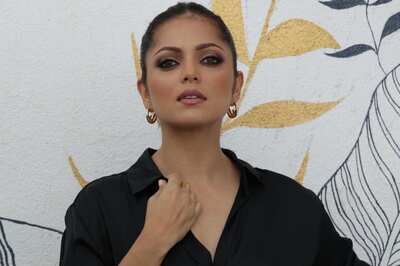
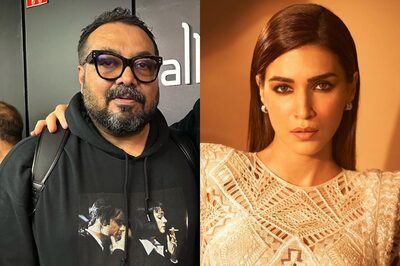
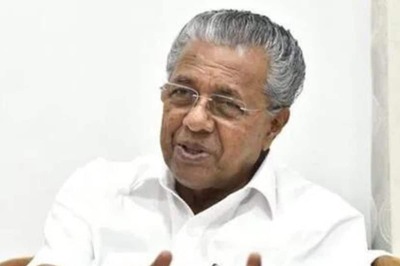


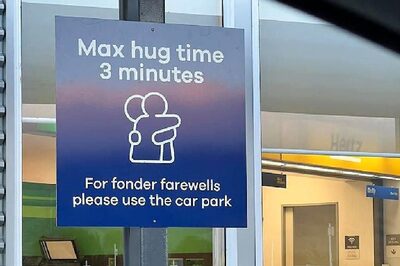
Comments
0 comment